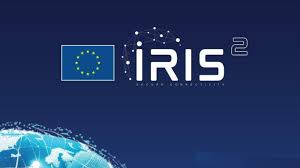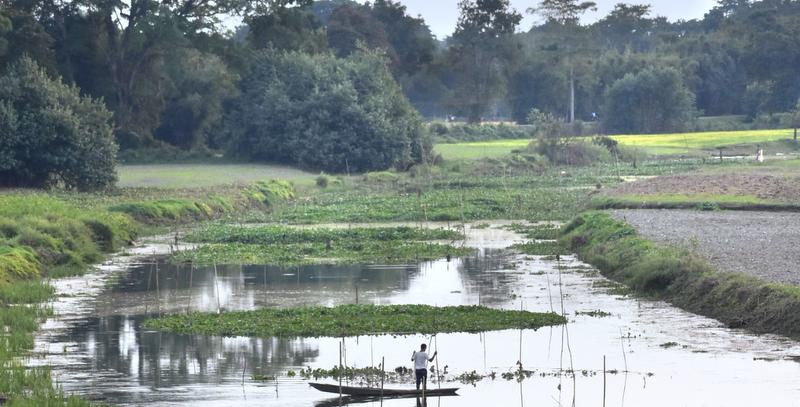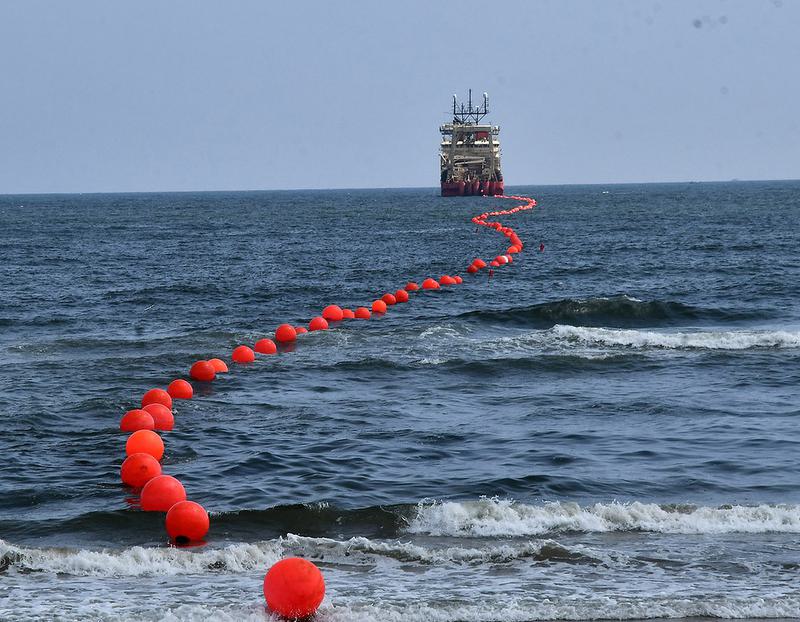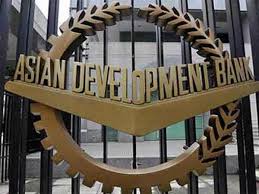IRIS²: The European Union's Ambitious Satellite Network

- 21 Dec 2024
In News:
The European Union (EU) has announced the launch of IRIS² (Infrastructure for Resilience, Interconnectivity, and Security by Satellite), a highly ambitious space program that aims to enhance satellite connectivity, security, and resilience for both governmental and civilian applications. The initiative is set to rival major global satellite systems, such as Elon Musk's Starlink, and aims to provide secure, high-speed broadband connectivity, particularly in underserved regions.
Key Features of IRIS²:
- Satellite Constellation: The system will consist of 290 satellites, including 264 in Low Earth Orbit (LEO) and 18 in Medium Earth Orbit (MEO).
- First Launch: The first satellite for the program is scheduled for launch in 2029.
- Secure Connectivity: IRIS² is designed to provide secure, high-speed broadband services, particularly for European regions that lack reliable connectivity.
- Collaboration: The project is a collaboration between the EU, the European Space Agency (ESA), and private sector partners, including SES, Eutelsat, and Airbus.
- Funding: The program is funded through a €10.6 billion (~$11 billion) investment, with a 12-year concession for its implementation.
Applications of IRIS²:
- Governmental Use:
- Border Surveillance: Enhanced monitoring for national security.
- Crisis Management: Reliable communication during natural disasters and emergencies.
- Infrastructure Security: Safeguarding key national infrastructure.
- Defense: Boosting military communication resilience.
- Civilian Use:
- Broadband Access: Providing internet access in rural and underserved areas.
- Smart Energy: Supporting management of energy grids and related technologies.
- Transportation: Ensuring reliable communication and navigation in aviation, maritime, and automotive sectors.
- Remote Healthcare: Improving healthcare access in remote locations.
Significance of IRIS²:
- Strategic Asset: The program will strengthen EU sovereignty in space technology and improve its technological independence, reducing reliance on non-European satellite systems.
- Cyber and Communication Resilience: IRIS² is designed to enhance resilience against cyber threats and communication disruptions, ensuring uninterrupted service for both public and private sectors.
- Commercial Benefits: The satellite network will provide high-speed connectivity for businesses across Europe, offering a boost to commercial activities in remote and underserved areas.
- Complementary to Existing EU Programs: IRIS² complements other EU space initiatives, such as Copernicus (Earth observation) and Galileo (satellite navigation), enhancing the EU's capabilities in the space sector.
Overview of the IRIS² Satellite Network:
- Deployment in LEO and MEO:
- 264 satellites in LEO will provide low-latency communication for a wide range of applications.
- 18 satellites in MEO will offer broader coverage and support for global connectivity.
- Funding and Partners: The program is funded by the EU, ESA, and private firms, including SES, Eutelsat, and Airbus, ensuring both public and private sector involvement in the project.
- Applications:
- The network will provide secure satellite services for critical government functions, including surveillance, defense, and crisis management.
- It will also support civilian uses, such as broadband, smart grids, and transportation, and will facilitate cloud-based services.
Strategic and Geopolitical Importance:
- Boost to European Competitiveness: By developing its own satellite system, the EU will enhance its competitive position in the global space sector.
- Security and Autonomy: IRIS² will help Europe maintain control over its communication infrastructure, strengthening its autonomy and reducing dependence on external players for critical services.
- Resilience in Crisis Situations: In times of disruption (e.g., natural disasters, cyberattacks), IRIS² will ensure that Europe can maintain secure, reliable connectivity.
72% Decline in Bird Species at Bordoibam-Bilmukh Bird Sanctuary, Assam

- 21 Dec 2024
In News:
A recent study has revealed a dramatic decline in the number of bird species at Assam's Bordoibam-Bilmukh Bird Sanctuary (BBBS). The sanctuary, once home to a rich diversity of avian species, has experienced a 72% decline in bird species over the past 27 years. The study, published in the Journal of Threatened Taxa, highlights the severe biodiversity crisis facing the sanctuary.
Key Findings:
- Bird Species Count Decline:
- In 1997, the sanctuary recorded 167 bird species.
- Recent surveys (2022-2024) have only recorded 47 species, marking a 71.85% decline in species count.
- Surveys:
- 2011 Survey: Recorded 133 species (86 resident, 23 migratory, 24 local migrants).
- 2017-2018 Survey: Found 120 species, along with a variety of other biodiversity, including macrophytes, fish, and aquatic ferns.
- Impact on Migratory Birds:
- Migratory species like Brown Shrike, Citrine Wagtail, and White Wagtail (winter migrants), and the Lesser Kestrel (summer migrant) were recorded recently.
- Main Causes of Decline:
- Anthropogenic Activities: Overfishing, poaching, excessive harvesting of aquatic plants, and egg collection.
- Land Use Changes: Habitat degradation due to agriculture, machinery noise, and land being used as pasture areas.
- Disruption of Food Chain: Habitat loss and changes in foraging and breeding grounds for both migratory and resident birds.
- Species of Concern:
- Poached Birds: Lesser whistling duck, Fulvous whistling duck, White-breasted waterhen, Indian pond heron, Eastern spotted dove, and Yellow-footed green pigeon.
- Threatened Species: The sanctuary is home to globally threatened species like the Spot-billed Pelican and Lesser Adjutant.
About Bordoibam-Bilmukh Bird Sanctuary:
- Location: Situated between Dhemaji and Lakhimpur districts in Assam, the sanctuary spans 11.25 sq. km at an altitude of 90-95 meters above sea level.
- History: Declared a wildlife sanctuary in 1996, it was originally part of the Subansiri River which has now shifted 7 km from the wetland.
- Climate & Vegetation:
- Moist tropical climate with an average annual rainfall of around 2,000 mm.
- The vegetation includes flooded valley grasslands and wetland plants, providing crucial habitat for migratory birds.
- Significance for Avian Species:
- Hosts a variety of migratory waterfowl, especially during the winter.
- Home to globally threatened bird species like the Spot-billed Pelican and Lesser Adjutant, along with resident birds such as the Indian Pond Heron and Fulvous Whistling Duck.
Conservation Efforts:
- The decline in bird species at the sanctuary has raised alarm about the degradation of wetland habitats.
- The study emphasizes that habitat loss can disrupt the food chain, water table, and nutrient cycle, which in turn harms both the ecosystem and human communities.
- The authors of the study advocate for intense conservation efforts to restore and protect the sanctuary’s biodiversity.
Assam's Biodiversity:
- Assam is one of India's most biodiverse states, with around 950 bird species, including 17 endemic species.
- The state also hosts 55 Important Bird and Biodiversity Areas (IBA), which are vital hotspots for avian species.
New Undersea Cables to Boost India’s Digital Connectivity

- 21 Dec 2024
In News:
India is expanding its digital infrastructure with the launch of two major undersea cable systems aimed at enhancing its Internet connectivity with Asia and Europe. The India Asia Xpress (IAX) and India Europe Xpress (IEX) are set to provide additional data links between India and these regions, supporting the growing demand for data usage. This also marks India’s increasing involvement in submarine cable resilience and security discussions.
Key Points:
- New Cable Systems:
- India Asia Xpress (IAX): Connects Chennai and Mumbai with Singapore, Thailand, and Malaysia.
- India Europe Xpress (IEX): Connects Chennai and Mumbai with France, Greece, Saudi Arabia, Egypt, and Djibouti.
- Total Length: Both cables, together spanning over 15,000 kilometers, will expand India’s undersea cable network.
- Ownership and Investment:
- Both cable systems are owned by Reliance Jio, with a strategic investment from China Mobile.
- Geopolitical Impact:
- These expansions are a response to growing Internet traffic, as well as India's rising geopolitical ambitions. They help bolster India’s defense strategy, improving cable resilience against disruptions from cyberattacks or physical damages.
- India’s active role in maritime cable network security is being closely watched, especially in key regions like the Bay of Bengal and the South China Sea.
- Past Cable Disruptions:
- In March, three cables connecting India to West Asia and Europe were disrupted, impacting Internet traffic. However, India’s alternate routing systems and data centers ensured services remained operational, highlighting the country’s resilience.
- International Role:
- India’s role in submarine cable resilience is growing. Telecom Secretary Neeraj Mittal is part of the International Advisory Body for Submarine Cable Resilience, established by the International Telecommunication Union (ITU).
Impact on India’s Connectivity:
- Bangladesh's Role:
- Plans to sell bandwidth from Bangladesh to Northeast India were recently put on hold. However, this does not significantly impact India as Northeast India already benefits from substantial fiber-optic connectivity through Power Grid Corporation of India’s transmission lines.
About Underwater Cables:
- What Are Undersea Cables?
- Undersea cables are fiber-optic cables laid under the ocean to transmit data across vast distances at high speeds.
- New Cable Systems:
- IAX: Connects India to Asia (Singapore, Thailand, Malaysia).
- IEX: Connects India to Europe (France, Greece, Saudi Arabia, Egypt, Djibouti).
- How They Work:
- Fiber-optic technology uses laser beams through thin glass fibers to transmit data.
- The cables are protected by multiple layers of insulation, plastic, and steel wires and are buried near shores or laid directly on the ocean floor in deep sea regions.
- Cable Features:
- Data Capacity: New cables can carry up to 224 Tbps (Terabits per second).
- Durability: Designed to avoid damage from fault zones, fishing areas, or anchors.
- Speed: Faster and more cost-efficient than satellite communications for large-scale data transfer.
Why Undersea Cables Over Satellites?
- Higher Capacity: Submarine cables handle far more data than satellites.
- Cost-Effective: More affordable for high-volume data transfers.
- Reliability: Cables provide more stable connections, especially for large-scale data, compared to satellites.
Strengthening Multimodal and Integrated Logistics Ecosystem (SMILE) program

- 21 Dec 2024
On December 20, 2024, the Government of India and the Asian Development Bank (ADB) signed a $350 million policy-based loan aimed at expanding India's manufacturing sector and improving the resilience of its supply chains. This loan is part of the Strengthening Multimodal and Integrated Logistics Ecosystem (SMILE) program.
Key Points:
- Loan Agreement Signatories:
- Department of Economic Affairs (DEA), Ministry of Finance, Government of India
- Department for Promotion of Industry and Internal Trade (DPIIT), Ministry of Commerce and Industry
- Asian Development Bank (ADB)
- SMILE Program:
- Goal: Strengthen the logistics ecosystem to enhance India's manufacturing sector and improve supply chain resilience.
- Structure: The program includes two subprograms focusing on strategic reforms in logistics and infrastructure development.
- Key Features of the SMILE Program:
- Strengthening Multimodal Infrastructure: Enhances logistics infrastructure at the national, state, and city levels.
- Standardization: Improves warehousing and other logistics assets to attract private sector investment.
- External Trade Logistics: Enhances efficiencies in external trade logistics.
- Smart Systems: Adopts systems for efficient, low-emission logistics to promote sustainability.
- Expected Outcomes:
- Cost Reduction & Efficiency: Strategic reforms will reduce logistics costs and improve efficiency.
- Job Creation: Infrastructure development and reforms are expected to generate substantial employment opportunities.
- Gender Inclusion: The program promotes gender inclusion through economic growth initiatives.
- Impact on India’s Economy:
- The transformation of India’s logistics sector will enhance the competitiveness of the manufacturing sector and drive sustainable economic growth.
About the Asian Development Bank (ADB):
- Headquarters: Mandaluyong, Metro Manila, Philippines.
- Established: December 19, 1966.
- Members: 69 countries, including both regional (e.g., India, China) and non-regional (e.g., USA, Japan) members.
- Function: ADB promotes social and economic development in Asia and the Pacific, providing loans, grants, and technical assistance for development projects.
- Key Shareholders:
- Japan: 15.57%
- USA: 15.57%
- India: 6.32%
- China: 6.43%
- Australia: 5.77%
2023 National Tansen Samman

- 21 Dec 2024
In News:
- The prestigious National Tansen Samman for 2023 was conferred upon Pt. Swapan Choudhary, a renowned tabla maestro from Kolkata, at the National Tansen Festival held in Gwalior, Madhya Pradesh.
Key Highlights:
- Tansen Festival: This festival, renowned for its celebration of classical music, is organized annually in Gwalior, which is considered the music capital of Madhya Pradesh.
- Prize Details: As part of the honor, Pt. Swapan Choudhary was presented with an honorarium of five lakh rupees, a citation plaque, and a shawl-shriphal.
- About the Award:
- The National Tansen Samman was established in 1980 by the Madhya Pradesh government to recognize exceptional contributions to Indian classical music.
- It is named after Tansen, one of India's most celebrated classical musicians.
- The award is the highest national honor in the field of Indian classical music.
- Additional Award:
- Raja Mansingh Tomar Samman for 2023 was awarded to Sanand Nyas, an institution from Indore. This institution has been active for 35 years in the promotion of classical music, drama, and cultural festivals.
- Pt. Swapan Choudhary’s Remark: In response to receiving the honor, Pt. Choudhary expressed his gratitude and pride in joining the ranks of distinguished artists awarded the National Tansen Samman.
About Tansen: The Iconic Musician
- Legacy: Tansen, also known as Miyan Tansen, was a prominent Indian classical musician, composer, and vocalist. He is credited with popularizing several ragas and revolutionizing the Indian classical music tradition.
- Role at Akbar’s Court: Tansen was one of the Navaratnas (nine jewels) in the court of Mughal Emperor Akbar. He held the title of Mian, meaning "learned man," bestowed upon him by Akbar.
- Contributions:
- Tansen is famous for his compositions, including the introduction of notable ragas such as Miyan ki Malhar, Miyan ki Todi, and Darbari.
- He also improved the plucked rabab, which is of Central Asian origin, enhancing its role in Indian classical music.
- Historical Influence: Tansen's life and work are surrounded by extensive legend, and his contributions remain deeply influential in the development of Indian classical music today.
